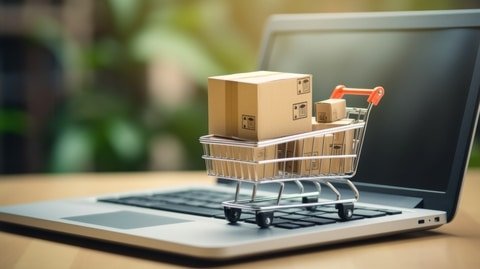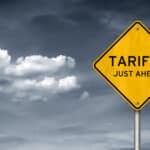Tales of Shipping Costs, Service Levels and Reverse Logistics
Several brands are concluding that making a net profit via eCommerce is almost impossible.
Fulfillment costs can eat into 20% – or more – of your revenues. Startup and other operational expenses can be prohibitive. You must pay for facilities, labor, packaging, technologies and more.
Yet market pressures and consumer demand for omnichannel options keep companies in the game. Not to mention their hope for long-term profitability.
Remember, it took years for Amazon, founded in 1994, to turn consistent profits. Smaller companies cannot wait that long.
ECommerce success will hinge not only on the products you offer but on efficient, effective fulfillment operations.
Traditional advice on profitability applies to eCommerce. You can build strong brands, increase product visibility and reduce costs.
Cost Reduction Cannot Cut Service Levels
But cutting costs can, well, cost. Lower service levels will send your customers elsewhere. And in the eCommerce game, they have plenty of places to go.
The eCommerce winners will navigate the tricky equation of optimizing shipping costs and increasing service levels. That sounds difficult because it is. But it’s necessary. And the right eCommerce technologies and strategies can help your enterprise get there.
Along the way, your enterprise must tackle returns and reverse logistics, leverage data for continuous improvement and maintain optionality.
Stiff Competition Undermines eCommerce Profitability
But first, let’s explain why eCommerce is so difficult: Your bottom line faces almost unlimited competition.
Numerous sellers offer similar products, and entry barriers are few. Unless you can find a niche (my advice!), this creates a highly competitive environment. Extra competition makes it more challenging for online retailers to stand out and profit.
- Too much selling: ECommerce platforms like Amazon, Etsy and eBay host millions of buyers and thousands of sellers. That’s intense competition.
- Not a lot of difference: Commoditized categories mean many sellers offer nearly identical products, making it hard to differentiate.
- Easy entry: Anyone can set up an online store. Where one competitor dies, five more might crop up.
- Savvy shoppers: Buyers have access to detailed information about products and prices. They can easily compare options side by side.
- Costly returns: Product returns can total 30% – or more – of your sales. Combining those lost profits with shipping fees can cripple a small business.
These factors make it crucial for eCommerce businesses to find ways to stand out, improve profitability and cut costs.
But first, let’s take a look at a couple of non-supply chain ways to compete.
Building a Strong Brand
A strong brand can generate customer loyalty and increase your pricing power, according to a top eCommerce technology provider. Unique features, superior quality, personalized services or a distinctive customer experience can create value beyond your product.
However, building a brand requires visibility. Visibility requires investment. You’ll have to pay for advertising, content marketing and social media marketing. While doable, these strategies take time.
Meanwhile, fulfillment can become a key aspect of branding. With eCommerce, shipping and delivery are your customers’ final touch points with your brand.
Think of how Amazon leverages Prime as a differentiator. Great service levels are not just table stakes in the eCommerce game. An enhanced experience can turn that one-time customer into repeat business.
Loyal customers are crucial for long-term profitability in any business, especially eCommerce.
Enhancing Product Visibility
Improving your product’s visibility online is critical. This involves optimizing your SEO and product placement in search results and listings, according to a highly rated ecommerce software company.
I can tell you from experience that these efforts require skilled personnel and cost money. However, they are essential for standing out in a crowded market. Sponsored listings and digital advertising can help, but they are growing more competitive and expensive.
Effective search engine optimization (SEO) can drive organic traffic to your eCommerce site. This includes using targeted keywords, optimizing product descriptions and ensuring your site structure is search-engine friendly.
And, of course, you can pay for advertising, digital or otherwise. But you need to monitor whether paying to increase product visibility generates a return on investment.
Mastering eCommerce Fulfillment for Profitability
So profit first for eCommerce sellers often involves lowering fulfillment costs. Pick, pack and ship, operations and custom packaging just cannot cost too much.
But as any supply chain pro will tell you, business models that cut costs often reduce service. Remember, your clientele has an entire world of competition at their fingertips. Another seller is a click away.
To maintain or increase service levels, you must streamline operations, optimize shipping costs and build a distributed logistics network.
Automated workflows for order processing and inventory management can streamline operations, improving efficiency, speed and accuracy. Automation reduces human errors, cuts overhead costs and results in fewer returns and exchanges.
Shipping costs can make or break your eCommerce profitability. Mastering this aspect involves several strategies:
- Build relationships with multiple shipping carriers. This provides you with more optionality and gives you leverage to negotiate better rates based on shipping volume.
- Regional shipping templates help you customize your shipping strategies based on regional inventory availability and fulfillment costs. This approach helps in negotiating better rates with carriers and optimizing delivery times.
- Packaging optimization strategies can select materials, design packaging and improve sustainability. The right cartonization algorithm alone can reduce air in the box from 60%-75% to 30%-40%, saving 10%-25% in freight charges. And in an eco-conscious world, minimizing waste is always a winner.
Distributed Logistics and eCommerce Shipping Costs
Distributed logistics is a broad strategy that encompasses your entire end-to-end supply chain- a true paradigm change in warehouse strategy. Your goal must be prepositioning inventory closer to your customers for fast and cheap delivery. This means fewer huge distribution centers in the middle of nowhere and smaller fulfillment centers near heavily populated areas.
Amazon and others have proven that quick delivery and great service increase sales. I have seen brands increase sales 15% after adding same-day delivery.
Most eCommerce sellers cannot build a nationwide network of warehouses, though. The only answer without skyrocketing eCommerce fulfillment costs? Partner with the right 3PLs. Tompkins Ventures has a global network of 3PLs that specialize in warehousing, distribution and fulfillment.
For inventory management, you’ll need the right software. Distributed order management is the fancy name. But the goal is to unify disparate streams of information from many locations. This is even more important if your operations deliver to stores and B2B, as many eCommerce players do.
These systems select the best shipping location based on various factors like proximity to the customer and inventory levels. Accurate order routing, inventory management and omnichannel coordination are crucial to reduce delivery times and costs.
The Deviltry of Returns, or eCommerce Reverse Logistics
No matter what, eCommerce players will have to face returns.
The numbers I have seen are staggering. Customers returned $743 billion in merchandise in 2023. Your clientele sends back about 30% of all online orders. Some apparel categories have even higher rates of returns – more than 40%, even approaching 50%.
Clearly, returns are a sore subject.
Say the two big sales months for your spring apparel line are March and April. Say it takes three weeks to process a returned item and get that product back in inventory. Anything sold after the first week in April misses your sales window.
Your options? Drastically reduce the price or hold it in inventory until next year.
Both cost you money. Selling products cheaper reduces or eliminates your profit. Holding inventory for a year can be expensive.
The good news? More than 90% of customers will buy again if the product return process is easy. If you lose a sale but gain a lifetime customer, that’s an eCommerce win.
Those stats make a robust reverse logistics system essential. A great reverse logistics system will maintain visibility and control over returns. The system must connect the customer-facing portal with your commerce platform and warehouse operations.
Your operations must configure workflows for different channels and product SKUs. Quickly verify the return, inspect the product and identify and fix repairable products. Get products that you can sell back into inventory. Dispose of products that you cannot sell.
And don’t miss that spring sales season.
Because by June, your customers will be buying summer clothes, not spring wear.
Leveraging Data for Continuous Improvement
Data analysis is crucial for continuous improvement. And eCommerce is no exception.
By monitoring sales, returns, shipping and customer feedback, you can identify patterns and areas for improvement. Pinpointing where your operations are leaking margin can help you make data-driven decisions to enhance profitability.
Data is the gold mine of eCommerce. Continuous data analysis of sales, returns, shipping and customer feedback can unveil patterns and areas for improvement.
Perhaps customers return a particular line of jeans more frequently than other products. Shipping data shows the jeans are returned within a few days. This suggests customers try them on, but the jeans don’t fit as expected.
Customer feedback shows many complaints about how the jeans’ sizing doesn’t match the guide on the website.
Based on this analysis, the retailer revises the online size guide, making it more detailed and accurate. They also offer free virtual fitting sessions to customers.
In the following months, the return rate for these jeans plummets, leading to improved profit margins
This type of data analysis helps you know exactly where to address profitability issues.
Optionality – or Maintaining Flexibility and Adaptability
The eCommerce landscape, like business everywhere these days, is full of perpetual disruption. Maintaining operational flexibility allows you to quickly adapt to new opportunities or mitigate risks. This might involve diversifying your supplier base, exploring new shipping methods or adapting to emerging consumer trends.
You will need the right operational platform to integrate with new channels, partners and suppliers. That helps you stay agile and responsive to market changes. This flexibility makes sure unforeseen circumstances or changing market conditions does not kill your hard-won profitability.
Staying ahead in eCommerce also requires quickly adapting to market trends. You might have to launch new product lines in response to consumer demand. Market dynamics might require you to adjust pricing strategies. And exploring new sales channels can reach a broader audience.
Creating Competitive Advantage
Building a strong brand and enhancing product visibility are solid, long-term goals for any eCommerce player.
But they take time and cost money.
If you can reduce your fulfillment costs while increasing service levels, your operations are ahead of the game. Can you combine that with a robust reverse logistics system, leveraging data for continuous improvement and optionality?
If so, your operations can elevate your eCommerce profitability.
Interested in discovering how to embrace these strategies? I would love to connect. Tompkins Ventures has partners across the continent and the globe who can make sure streamlined, cost-effective and capable operations meet and exceed your customers’ demands.
Related Reading
- Raw Materials: The Start of Your End-to-End Supply Chain
- The China Decoupling Might Hit Before You Are Ready
- How 5Ls Make a Western Hemisphere Logistics Hub
- Global Supply Chains at Risk – Again
Jim Tompkins, Chairman of Tompkins Ventures, is an international authority on designing and implementing end-to-end supply chains. Over five decades, he has designed countless industrial facilities and supply chain solutions, enhancing the growth of numerous companies. He previously built Tompkins International from a backyard startup into an international consulting and implementation firm. Jim earned his B.S., M.S. and Ph.D. in Industrial Engineering from Purdue University.






